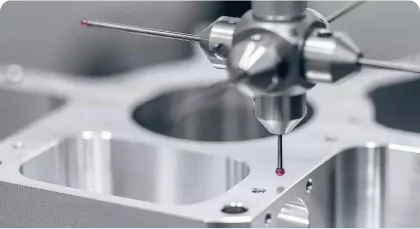Cost-Effective Rapid Prototyping Techniques
Cost-Effective Rapid Prototyping Techniques for Product Development
In today’s fast-paced product development landscape, the ability to validate ideas quickly and affordably is crucial. That’s where cost-effective rapid prototyping techniques come in. These methods enable engineers, startups, and manufacturers to create physical prototypes without incurring the high costs and long lead times of traditional production.
At Alpha-Mold, we provide practical, budget-friendly prototyping solutions that help our clients iterate faster, reduce risks, and accelerate time-to-market.
What Is Cost-Effective Rapid Prototyping?
Rapid prototyping is the process of quickly fabricating a scale model or functional version of a part using digital design data. When done cost-effectively, it allows you to test form, fit, and function without committing to full-scale production or tooling expenses.
Our approach emphasizes affordability without sacrificing accuracy or usability. We help customers choose the right prototyping method based on their design goals, budget, and material requirements.
Hot tag:
low-cost 3D printing for early product development
affordable CNC machining for prototype components
cost-effective prototyping for plastic parts
China-based rapid prototyping service for startups
budget-friendly product design validation techniques
Top Cost-Effective Rapid Prototyping Techniques
1. Fused Deposition Modeling (FDM) 3D Printing
Best for: Basic geometric validation and concept models
Advantages: Low material costs, quick turnaround
Materials: PLA, ABS, PETG, TPU
FDM is widely used for visual models and initial form factor checks due to its low price and ease of use.
2. Stereolithography (SLA) 3D Printing
Best for: High-detail visual prototypes and low-volume parts
Advantages: Smooth surface finish, precise detail
Materials: Photopolymer resins
While slightly more costly than FDM, SLA offers finer resolution, making it suitable for design validation or fit testing.
3. CNC Machining for Prototyping
Best for: Functional metal or plastic parts
Advantages: Accurate, production-grade components
Materials: Aluminum, steel, POM, ABS
By optimizing tool paths and using stock materials, CNC machining can be made affordable for one-off or small-run parts.
4. Urethane Casting
Best for: Short-run production or pre-launch samples
Advantages: Mimics injection-molded finish without hard tooling
Materials: Polyurethane resins simulating ABS, rubber, or PP
Urethane casting is ideal for bridge production and provides functional parts at a fraction of injection molding costs.
5. Sheet Metal Prototyping
Best for: Enclosures, brackets, and housing components
Advantages: Cost-effective for small batches
Materials: Aluminum, stainless steel, galvanized steel
Laser cutting and CNC bending allow for fast turnaround with minimal setup costs.
How to Choose the Right Prototyping Method
When evaluating prototyping techniques, consider the following:
Purpose of the prototype: Visual display, mechanical testing, or user feedback
Material requirements: Functional characteristics like strength, flexibility, or finish
Quantity: Single piece or short-run batch
Budget: Overall cost of design, material, and production
Timeline: Delivery time expectations
Applications of Cost-Effective Prototyping
These techniques are widely used in various stages of product development, including:
Initial Concept Models: To explore design alternatives
Engineering Validation: For mechanical testing and refinement
User Testing Prototypes: To collect real-world feedback
Marketing Samples: To show potential customers or investors
Bridge Manufacturing: Before committing to high-volume tooling
Why Alpha-Mold Is a Trusted Prototyping Partner
Tailored Method Selection
We help you choose the most cost-effective option based on part geometry and application.China-Based Cost Advantage
Our streamlined operations allow us to offer competitive pricing without compromising on quality.Material and Process Variety
From plastics to metals, and from printing to machining, we cover all major prototyping techniques.Quick Turnaround
Rapid delivery for early-stage models or pilot production parts.Scalability
We support the transition from prototype to production with ease.
Cost-effective rapid prototyping techniques make it easier than ever to test ideas, refine designs, and move confidently toward mass production. At Alpha-Mold, we offer practical and efficient prototyping methods tailored to your product development needs. From 3D printing to machining, we combine flexibility with affordability—helping innovators and engineers bring their ideas to life, faster and smarter.
Contact us to explore the best prototyping solution for your next project.








